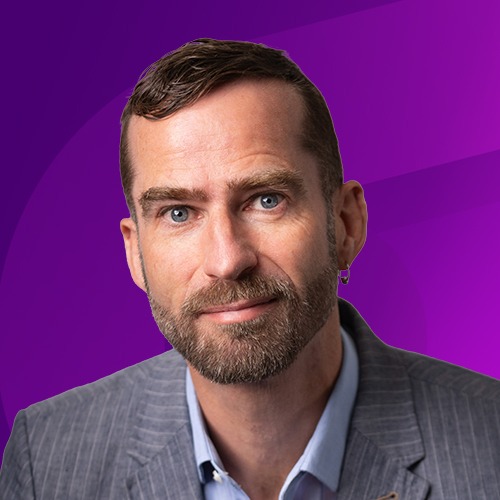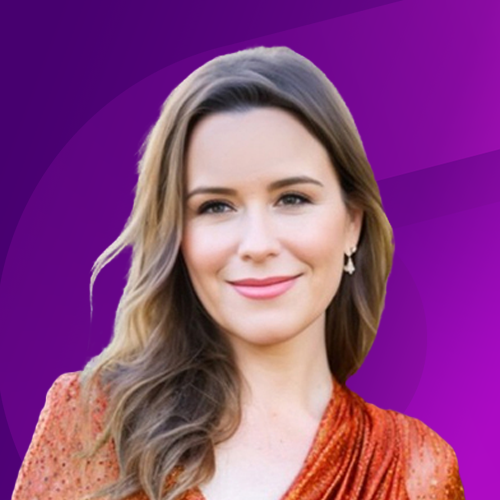The Gamechangers in Resilience series highlights how true resilience isn’t something you simply check off a list. It’s driven by leaders who rethink how organizations prepare, adapt, and thrive under pressure. This series celebrates the innovators who are moving resilience beyond plans and policies – embedding it into everyday decisions and shaping stronger, more adaptable organizations for the future.
Today, we’re proud to spotlight Liz Hess.
Liz has made a career out of connecting people, processes, and capabilities in ways that strengthen organizations from within. With a background in Emergency Management and a passion for operational resilience, she now leads as Senior Project Manager of Business Continuity for Business Services at LexisNexis Risk Solutions. Liz approaches resilience like a puzzle – bringing the right teams together through the BC Steering Committee to move beyond static plans and embed resilience as a living, breathing part of the business.
Q: How did you get your start in the field of resilience?
Liz: I began my journey with a bachelor’s in Emergency Management and later earned a Master of Public Administration. My career initially focused on healthcare emergency management, starting with an internship and consultancy at Penn State Milton Hershey Medical Center.
After graduation, I moved into consulting, specializing in disaster preparedness for the public health and healthcare sectors. This led to a role as a Regional Director of Emergency Management within a health system. Looking to broaden my impact, I transitioned into Business Continuity in the corporate sector. Today, I focus on Business Resilience & Continuity, combining my passion for preparedness with business operations.
Q: You’ve worked across public health, private sector, and government consulting. How do you navigate the fine line between “collaboration” and “competing priorities” when crisis hits?
Liz: Navigating that fine line involves a continuous cycle of preparedness, trust-building, and stakeholder engagement.
First, I focus on defining and testing assumptions across teams to understand core capabilities and roles.
Second, I ensure clear communication and validation of these capabilities to build trust and shared understanding.
Third, I maintain consistent stakeholder engagement to anticipate and manage different priorities during a crisis.
Preparedness, trust, and engagement are the three elements that help me balance collaboration and competing priorities effectively.
Q: When you’re facilitating exercises and everyone agrees on the surface… what’s your go-to move to surface the tension no one wants to name?
Liz: I always guide exercises with two goals:
-
Build familiarity and confidence in our plans and processes.
-
Test assumptions and uncover areas for improvement.
I watch for moments during discussions where it makes sense to dig deeper versus deferring issues for later. I aim to build confidence while avoiding public blame.
Building trust beforehand is key. I also find leadership champions who trust my judgment. During an exercise, I summarize the current state and then pose a “what if” question or move the scenario into technical details.
For example:
“We seem confident in our Disaster Recovery Playbook. We’ve noted the QA team needs better integration. Could a new staff member recognize when to involve QA during an event based on the current documentation and training?”
This helps surface real gaps in a way that promotes learning, not blame.
Q: What’s one tactic that helps shift resilience from a checkbox to a culture?
Liz: I focus on validating assumptions about daily operations and embedding resilience into existing processes instead of adding separate requirements.
By expanding current workflows to include resilience parameters, resilience becomes part of everyday work. People see it, interact with it, and build muscle memory around it.
Instead of annual plan reviews, I collaborate regularly with teams to spot integration opportunities.
Leadership now brings my team into incidents early – showing resilience is part of the culture, not just a dusty binder on a shelf.
Q: In critical response, you’re often managing more than just a crisis – you’re managing fear, emotion, and public perception. What’s something you wish more people understood about leading during those moments?
Liz: It’s not always possible depending on the event, but whenever feasible, I remind teams to stick to the facts.
People want and deserve:
-
Timely notice,
-
Assurance that we know what’s happening,
-
Confidence that we’re working on a solution, and
-
Clear expectations about updates.
Response teams must focus on what they can manage instead of trying to control everything at once.
Q: We often plan for the disaster, but not the aftermath. What still surprises leaders when it comes to recovery and return to operations?
Liz: Even without direct recovery leadership after a major event, planning and exercises often show that leaders assume restoration is straightforward.
In reality, interdependencies between organizations are often poorly mapped or misunderstood. Like natural disasters, business recovery can be expensive, complicated, and delayed without proper planning.
Q: What’s your resilience blindspot test – something you do or ask that reveals how much depth there really is in a plan or program?
Liz: I treat the plan itself as just a reference point 0 the value is in the stakeholder engagement.
I meet one-on-one with key team members and ask them:
-
What are your assumptions about your role?
-
What are your assumptions about others’ roles?
I consolidate their answers into a simple visual and present it back to the group. It helps validate understanding and reveals gaps we need to close.
Q: You’ve mentored teams and taught resilience. What is the key mindset shift you’ve seen that unlocks real capability in someone just starting out?
Liz: Regulations and checklists can make resilience feel overwhelming. Focusing on core capabilities brings clarity.
When people understand their tangible role in building resilience, they can better articulate its value and make real progress. Communication at every level is key to unlocking the full strength of a resilience program.
Q: Fill in the blank: A resilient organization isn’t the one with the thickest binder, it’s the one…
Liz: where every team knows their own roles and responsibilities and actively collaborates with others to align on priorities.
Q: What’s the resilience playbook you are writing in real time?
Liz: When planning, I often build one-page visual summaries to outline processes, confirm assumptions, identify gaps, and clarify roles.
This approach helped me create a “playbook” for our organization, integrating multiple plans into quick-reference visuals and supported by a Playbook Documents table with direct resource links.
The playbook helps:
-
Users quickly find the right process or visual even if they’re new to it, and
-
Leaders stay aligned by spotting overlaps and opportunities across the business.
Best of all, it’s a living resource – easy to update as incidents, planning, or exercises uncover ways to improve.














